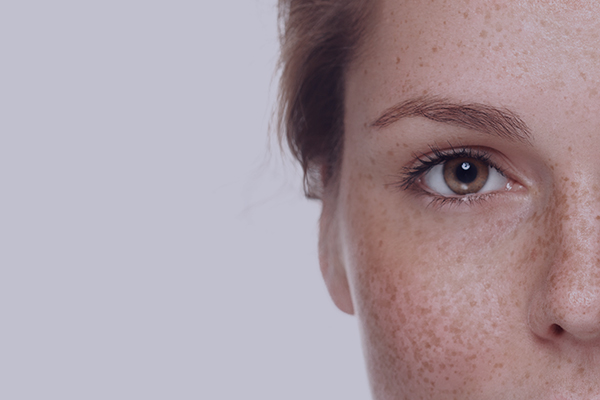Keratoconus Treatments: Causes, Symptoms, and Modern Treatments in Eye Care

Shedding Light on Keratoconus
For many people, vision changes can be subtle and slow to develop. But for those affected by keratoconus, the onset and progression are often times more dramatic. This progressive eye disorder can transform the shape of the cornea and impact day-to-day life in ways that are both frustrating and unexpected. Understanding keratoconus, it’s causes, its symptoms, and the evolving landscape of treatments can make all the difference when it comes to preserving lifelong vision.
What is Keratoconus
Keratoconus is a condition in which the normally round cornea thins and bulges outward into a cone-like shape. Because the cornea is responsible for focusing most of the light entering the eye, any change in its shape can cause distorted or blurry vision. This can affect reading, driving, and even recognizing faces, and can sometimes come with increased light sensitivity or glare.
Although keratoconus often begins in adolescence or early adulthood, it can progress for several years before stabilizing. Both eyes are usually affected, though one eye may be more severely impacted than the other.
What Causes Keratoconus
Researchers are still unraveling the exact causes of keratoconus. The evidence points to a combination of genetic, environmental, and possibly hormonal influences.
Key risk factors for developing keratoconus include:
- Family history of keratoconus or other corneal diseases
- Frequent or forceful eye rubbing, especially in individuals with allergies or atopic conditions
- Certain medical conditions, such as Down syndrome or connective tissue disorders
- Oxidative stress that weakens the corneal structure
- Hormonal changes, particularly during puberty or pregnancy
However, keratoconus can develop in people with no apparent cause. Early identification is crucial to prevent severe vision impairment.
Keratoconus Symptoms
Symptoms of keratoconus often appear gradually and can easily be confused with other vision problems at first. As the condition progresses, people may notice:
- Blurry or distorted vision, even when wearing glasses
- Increased sensitivity to light and glare
- Frequent changes in glasses or contact lens prescriptions
- Halos or ghost images, especially around lights at night
- Mild eye discomfort or redness
Today’s eye care professionals use advanced imaging techniques, such as corneal topography, to detect keratoconus in its earliest stages – sometimes before symptoms are even noticeable.
Can Keratoconus Be Cured?
While there is no cure for keratoconus, advances in eye care have made the condition more manageable than ever before. Modern treatments can slow or stop its progression and improve vision in most cases. With early diagnosis and a personalized treatment plan, many people with keratoconus can maintain good vision throughout their lives.
Keratoconus Treatments
Thanks to ongoing research and clinical innovation, individuals with keratoconus now have access to a wide range of treatment options. The best approach depends on the stage and severity of the disease.
-
Glasses for Keratoconus
In the earliest stages, glasses for keratoconus or soft contact lenses may correct vision by compensating for the changes in the cornea’s shape. As the condition advances, however, glasses may become less effective and specialty contact lenses are often required.
-
Custom Contact Lenses
Rigid gas permeable (RGP) lenses, hybrid lenses, and scleral lenses are designed for irregular corneas. These lenses create a new, smooth surface over the eye, helping light focus more effectively and improving vision for those with moderate to advanced keratoconus.
-
Cornea Cross-Linking (Corneal Cross-Linking Procedure)
Corneal cross-linking is a significant advancement in the treatment of keratoconus. This minimally invasive procedure involves applying riboflavin drops to the cornea and then exposing it to ultraviolet light. The corneal cross-linking procedure strengthens the corneal tissue by creating new collagen bonds, helping to stop the progression of the disease. For many patients, this outpatient procedure means they can avoid more invasive treatments later.
-
Corneal ring implants
Corneal ring implants (ICRS) are small, curved inserts placed in the cornea to flatten its shape and reduce distortion. This minimally invasive procedure can improve vision and contact lens comfort in mild to moderate keratoconus. The implants are reversible and often delay the need for more invasive treatment.
-
Corneal transplants
For advanced keratoconus with severe thinning or scarring, corneal transplantation may be required. Full or partial transplants replace the damaged cornea with healthy donor tissue. Most patients regain functional vision, though recovery takes time and careful follow-up is essential.
-
RevitalVision Treatment
RevitalVision is an innovative, clinically proven, non-invasive technology that uses computer-based visual training to enhance the way the brain processes information from the eyes. Rather than changing the cornea itself, RevitalVision strengthens neural visual processing. Recent studies have shown that RevitalVision can significantly improve visual acuity and contrast sensitivity in individuals with stable keratoconus who wish to enhance their vision beyond what is achievable with surgery, glasses, or contacts. The technology is FDA-cleared for use in individuals over nine years old and is CE-marked, with clinical evidence of effectiveness in a variety of eye diseases and vision conditions.
Keratoconus Treatment Without Surgery
Many people with keratoconus can avoid surgery at an early stage of the disease through effective non-surgical options. These include:
- Custom contact lenses, such as RGP, hybrid, or scleral lenses, that compensate for the irregular shape of the cornea
- RevitalVision*, which enhances neural visual processing for better sight beyond existing eye treatments.
Keratoconus Self-Care
Living with keratoconus means taking an active role in protecting your vision. These self-care strategies can make a real difference:
- Avoid rubbing your eyes, as this can worsen corneal thinning
- Treat allergies promptly to reduce itching and discomfort
- Wear sunglasses to shield your eyes from ultraviolet rays
- Schedule regular check-ups with your eye care professional to monitor your condition
- Maintain a balanced diet rich in antioxidants to support overall eye health
Looking Ahead: New Hope for Keratoconus Patients
As technology and clinical research continue to evolve, the outlook for those living with keratoconus is more positive than ever before. Advanced treatments like RevitalVision offer new hope for patients diagnosed with this condition. Most people with keratoconus can now expect to live full, active lives with the right care, early intervention, and ongoing support from their eye care provider.
If you notice frequent changes in your glasses’ prescription, experience blurred or distorted vision, or struggle with light sensitivity, do not ignore these potential warning signs. Schedule an eye exam and discuss any concerns with your ophthalmologist or optometrist. Early action is the best way to protect your sight and stay ahead of keratoconus.
This article is intended for informational purposes. For personal medical advice, please consult a qualified eye care professional.
*It is important to note that RevitalVision does not replace surgery for those who are indicated for surgery due to a progressive condition. RevitalVision is an effective tool to improve vision beyond traditional eye treatments
Click for more details on low vision rehabilitation.


